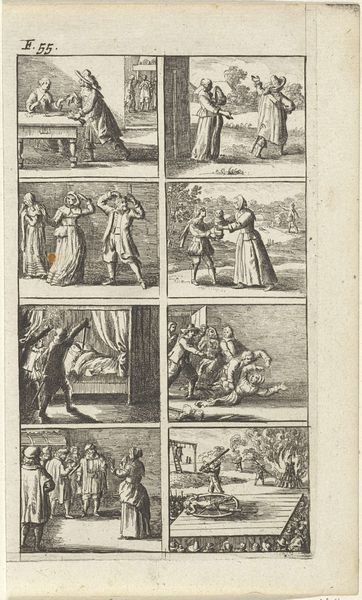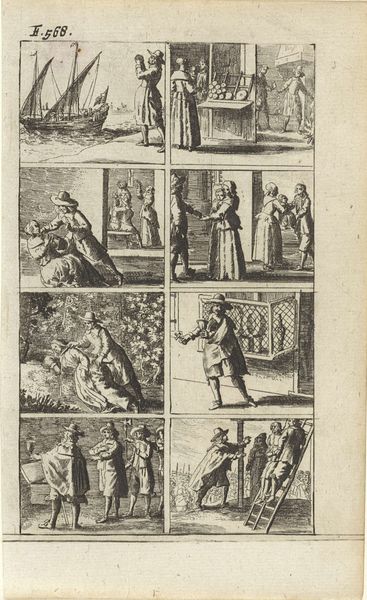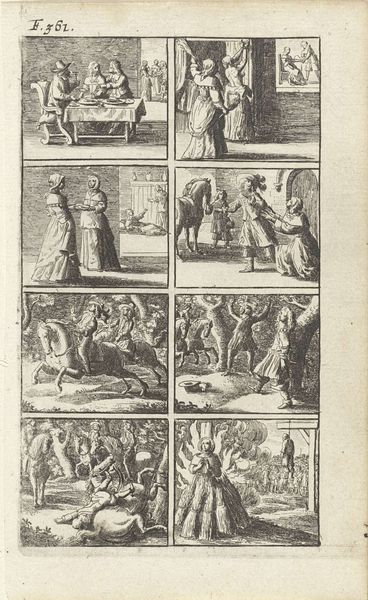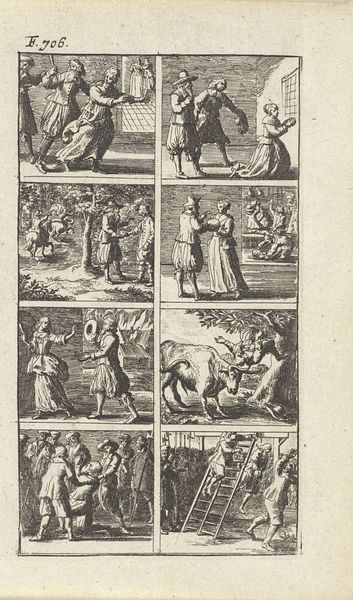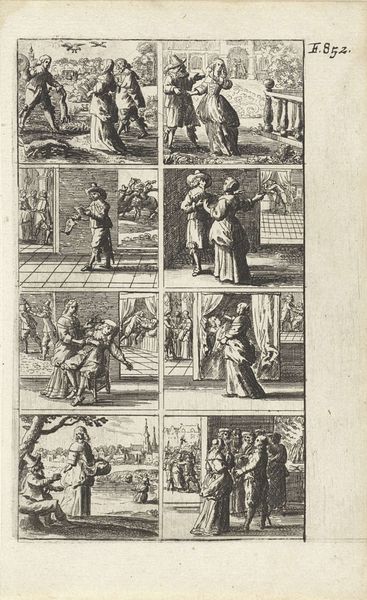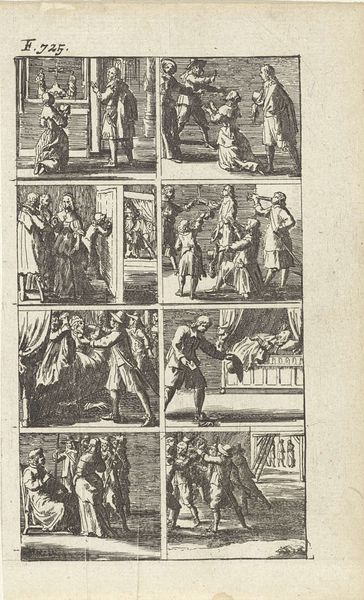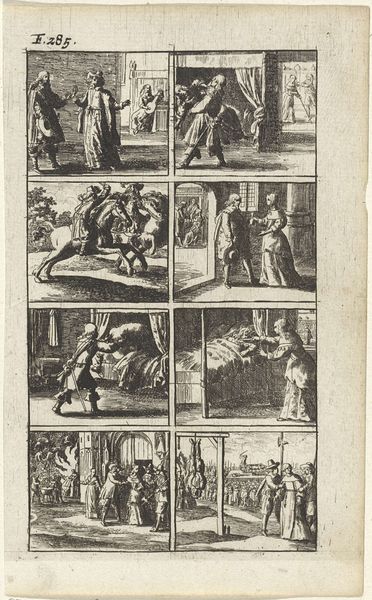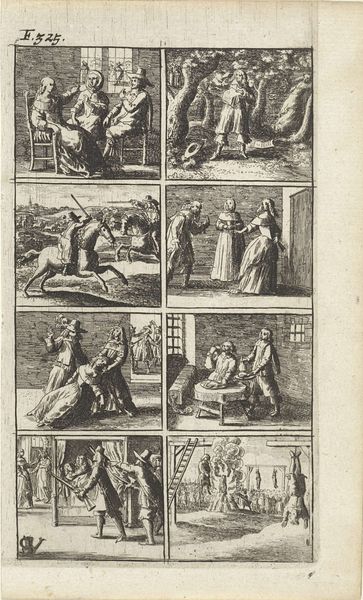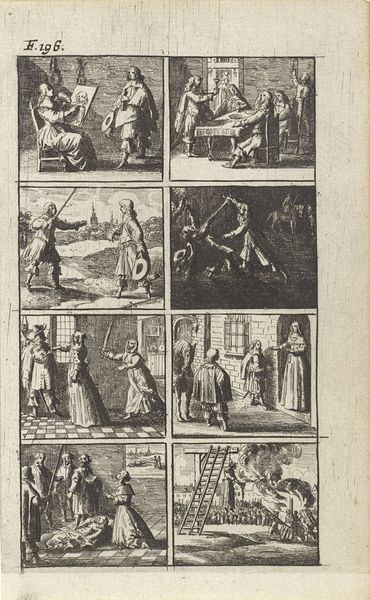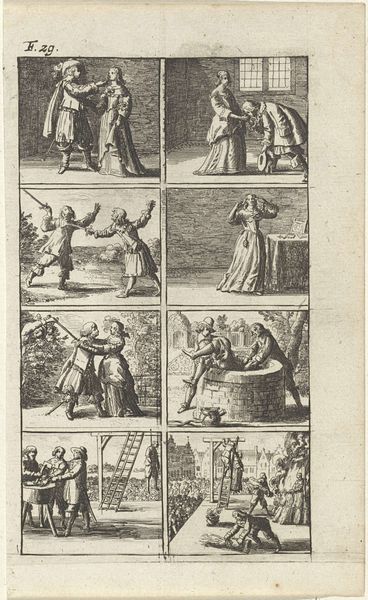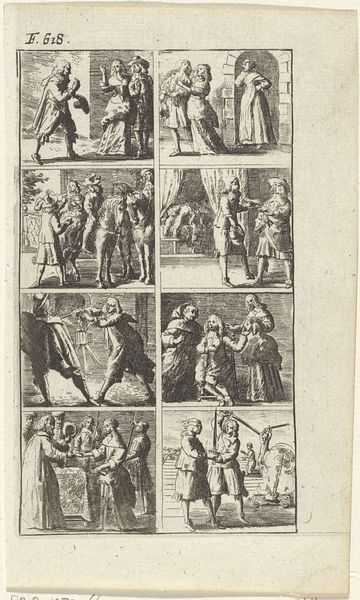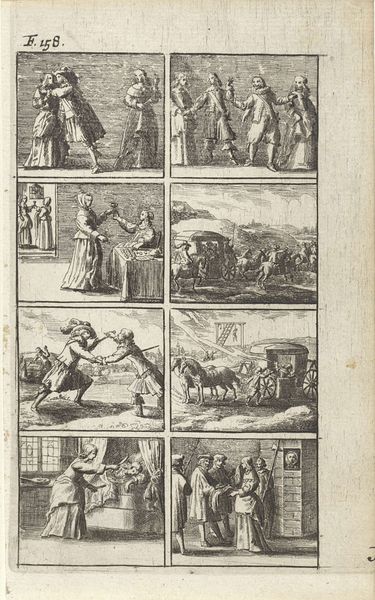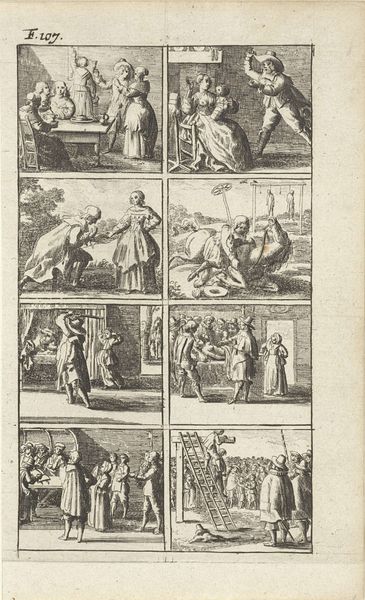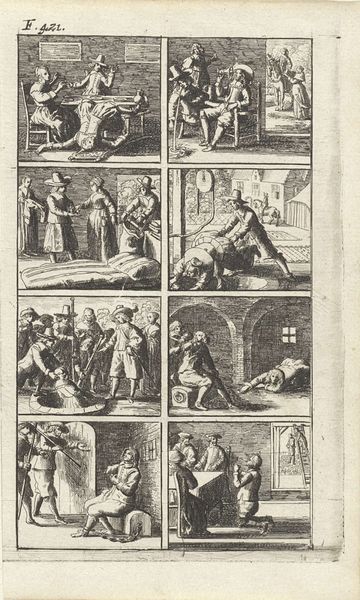
Verhaal met voorstellingen van moord en doodstraf (F. 652.) 1667
0:00
0:00
print, engraving
#
narrative-art
#
baroque
# print
#
old engraving style
#
figuration
#
line
#
genre-painting
#
history-painting
#
engraving
Dimensions: height 155 mm, width 95 mm
Copyright: Rijks Museum: Open Domain
Editor: This engraving by Abraham Dircksz. Santvoort from 1667, titled "Verhaal met voorstellingen van moord en doodstraf," is really striking. The way it's broken up into these almost comic strip-like panels, each depicting some form of violence, is unnerving. What can you tell me about the context in which it was created? Curator: It's crucial to understand that 17th-century Dutch society was grappling with issues of crime, punishment, and public morality. Santvoort’s print presents violence not as spectacle but as a codified social practice. How does seeing these panels, each depicting a different act, influence your understanding of societal power structures? Editor: I guess it makes me think about who has the authority to enact this violence and the kind of social order that is being maintained. It's interesting that these scenes are presented so matter-of-factly. Curator: Precisely. This is not about individual transgression, but about power structures in play. Consider also the role of gender within this structure. Are men and women subject to the same forms of violence in these panels? Editor: I notice that in the second and last scene it is a woman that is being judged and sentenced. Why do you think the artist decided to highlight this dynamic, particularly during this time period? Curator: Santvoort's print may function as a critique. Visual representations of this violence implicitly reinforced social hierarchies. I wonder, in looking at this piece, does it resonate with contemporary concerns about social justice and the representation of violence in media? Editor: It definitely does. Thinking about how easily we consume images of violence today, it's a reminder that these images are never neutral; they’re always reinforcing certain narratives. Curator: Exactly. Examining these historical images helps us critically assess how power, gender, and justice are visualized and perpetuated in our own time.
Comments
No comments
Be the first to comment and join the conversation on the ultimate creative platform.
